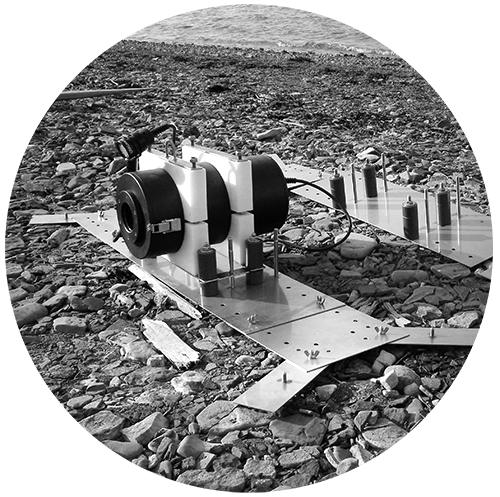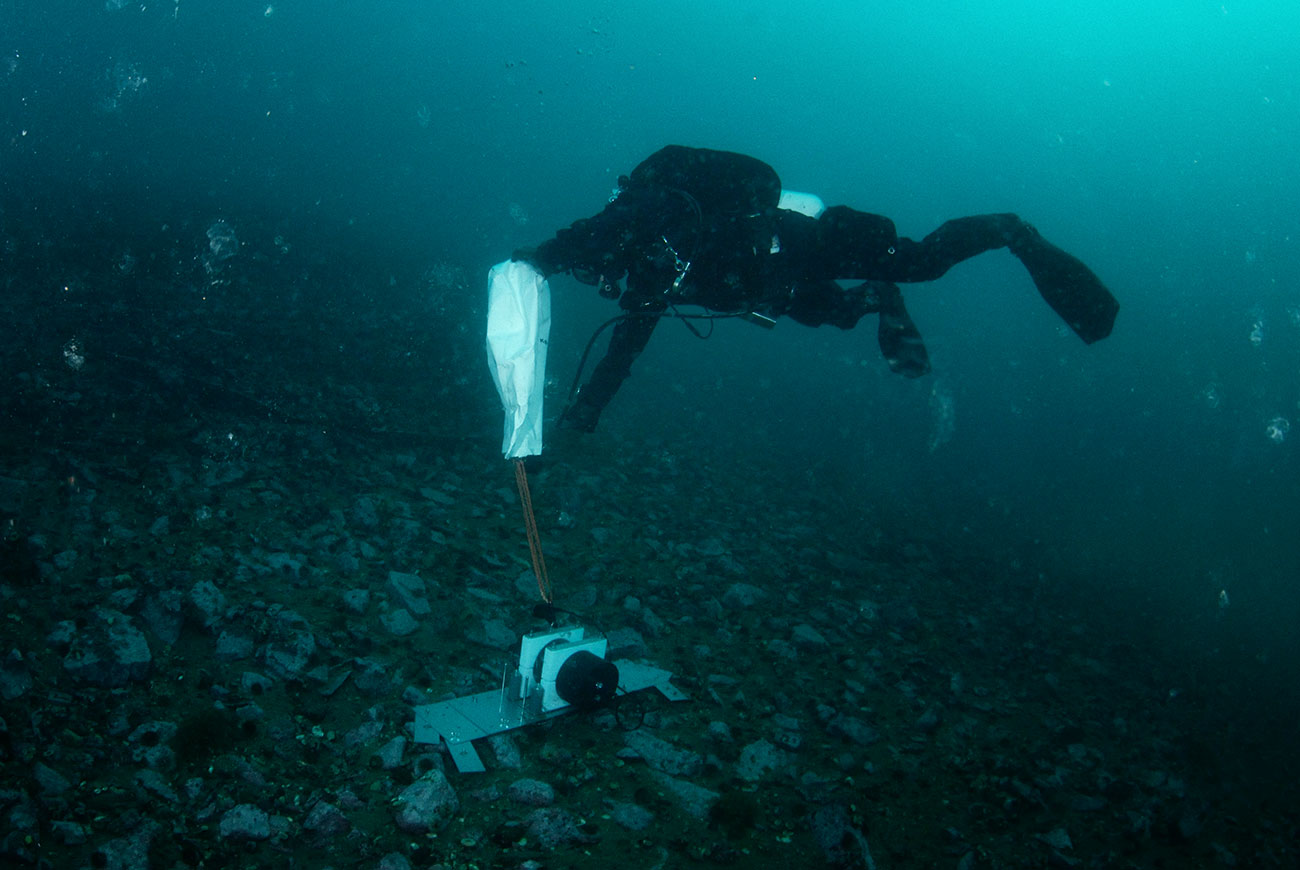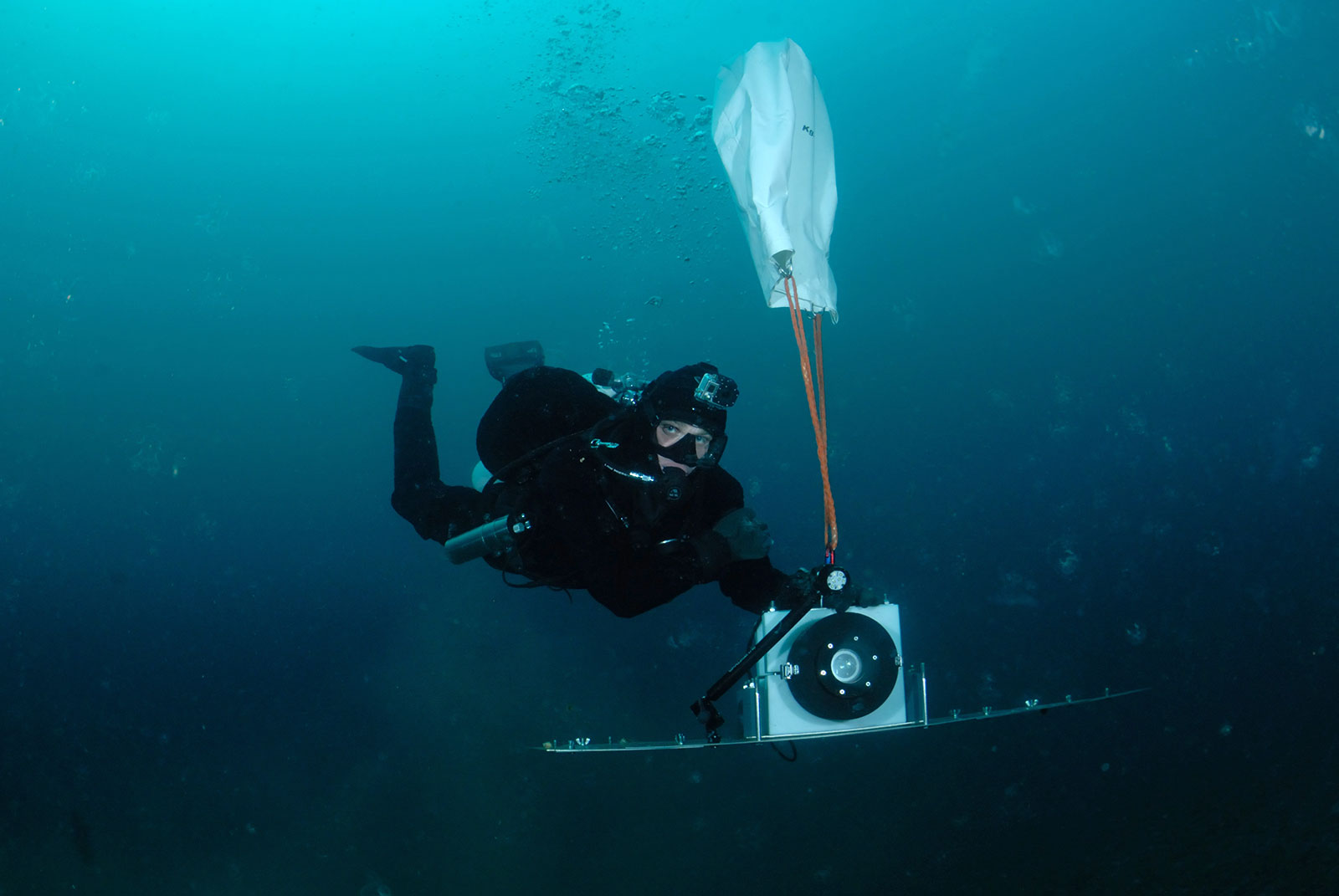Our System
The system we use at the moment is a modified copy of Hydrolapse by Harbotronics made by GRALmarine. It is able to withstand a deployment period of one year at maximum working depth of 50 meters. It bases on a simple digital SLR camera – Canon Rebel T3 (1100D) fitted with 128GB Class 10 SD XC Memory Card. Depending on the image quality this data volume is suitable for year round projects when taking lowest compression highest resolution JPEGs every 15-30 minutes. Time lapse sequences are controlled externally through a custom made controller. The system is powered from high capacity two Li-ion rechargeable battery packs – one for the camera and one for the lamp, totally 40 Ah. Instead of a strobe that needs a lot of power for charging and keeping this voltage a video lamp, that is synchronized with the shutter, was used.
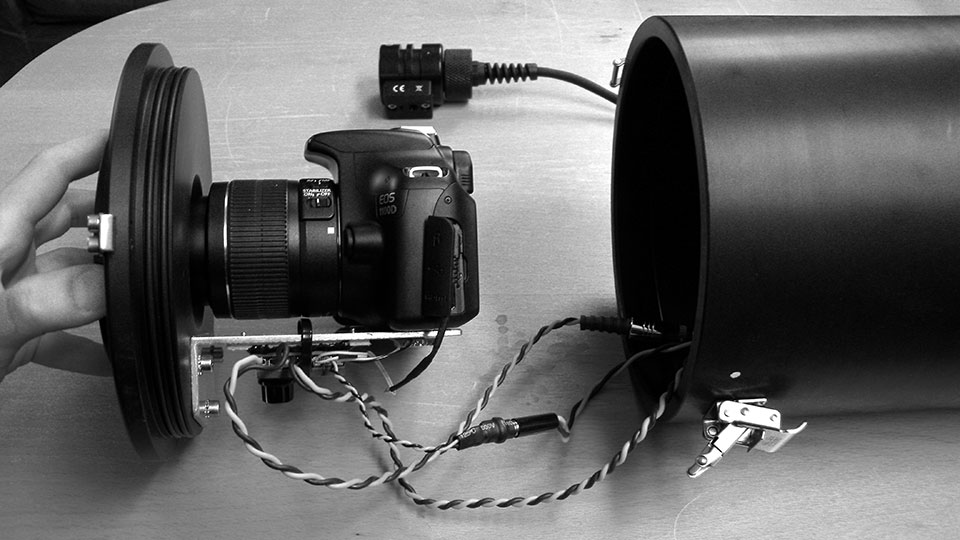
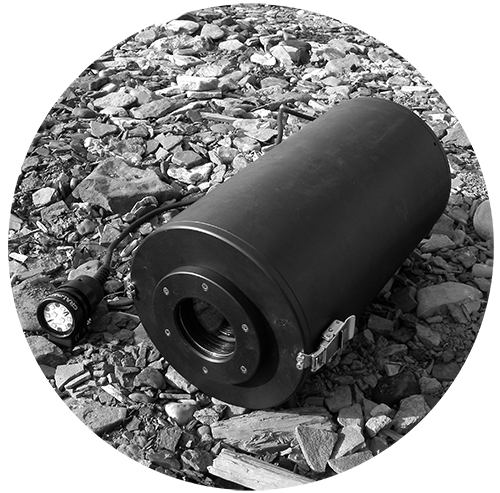
Delrin Housing
Camera, steering, and batteries were enclosed in a cylindrical housing made of delrin where water resistance is obtained by two o-ring seals placed in a row. To remove the internal moisture and avoid any fog on the glass viewfinder inside the housing we use sufficiently large bags with silica gel. Altogether the system itself is quite compact (30 cm long and a diameter of 20 cm), lightweight (< 15 kg), easy to assemble and deploy by one diver even from a small rubber boat.
Mount
On a straight-looking setup observing a certain part of the sea floor and a water overlying bottom we fix the housing to a flat metal frame by placing it on two profiled in plastic u-shaped brackets that enclose it completely. The brackets can be screwed to the metal frame by butterfly screws in several positions. Additionally, cut into several different in size distancing pieces can be moved to some degree both horizontally and vertically, thus the optical axis of the camera can be adjusted on-site even underwater in thick dry gloves. Such design permits also for recovering only the housing leaving the heavy frame on the sea-bottom e.g. for changing the camera settings or downloading the data. Lamp is mounted using standard photo/video arm with tightly screwed ball-head clamp. The metal frame serves as a stabilization platform for the whole construction. After placing the setup on the sea floor rocks which are present in the vicinity are placed on its sides to ensure full stability of the whole construction (Balazy et al. 2017 Journal of Marine Engineering & Technology).
